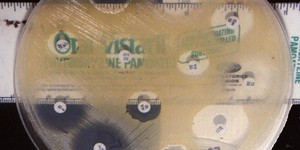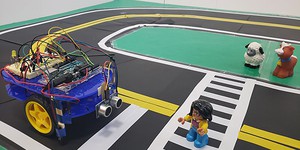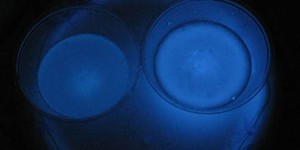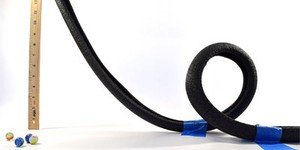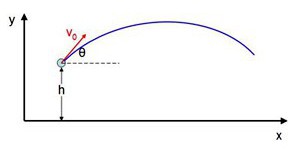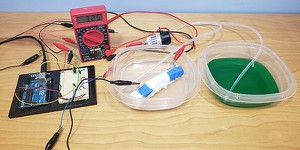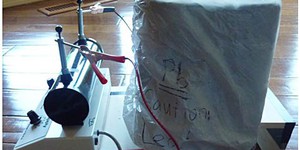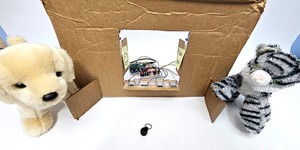Twelfth Grade Science Projects (175 results)
Science Buddies' twelfth grade science projects are the perfect way for twelfth grade students to have fun exploring science, technology, engineering, and math (STEM). Our twelfth grade projects are written and tested by scientists and are specifically created for use by students in the twelfth grade. Students can choose to follow the science experiment as written or put their own spin on the project.
For a personalized list of science projects, twelfth graders can use the Science Buddies Topic Selection Wizard. The wizard asks students to respond to a series of simple statements and then uses their answers to recommend age-appropriate projects that fit their interests.
Let us help you find a science project that fits your interests, with our Topic Selection Wizard.|
Select a resource
Sort by
|
Remembering to take medicine at the right time can be hard, especially if you need to take multiple medications at different times of day. It might not be a big deal if you forget to take your daily multivitamin, but for some people, forgetting to take medication at the right time can be dangerous. What if you had a device that could not only set off an alarm at the right time, but also automatically dispense the right pills for you? In this project, you will build an automatic medicine…
Read more
Featured
Have you heard that garlic powder is supposed to inhibit the growth of bacteria? Which do you think would make a better disinfectant: a solution of garlic powder or a solution of bleach? This project shows you a straightforward way to compare the effectiveness of different disinfectants (or other antimicrobial agents), by measuring zones of inhibition on a culture plate.
Read more
How do self-driving cars stay on the road? How do vehicles with autonomous or driver-assist features automatically brake, steer around obstacles, or perform tasks like adaptive cruise control? Experiment with these behaviors and more in this science project as you build and program your own autonomous Arduino robot.
Read more
New
Drones are small, fast, and maneuverable - this can make them very hard to knock down! Check out this Mark Rober video where he explores both how professional defense companies and some backyard YouTube engineers tackle the problem of knocking drones out of the sky. Can you take this engineering challenge on yourself? What methods can you devise to take down a drone? Which one works the best?
Drones can be expensive, and you probably do not want to risk damaging a $1,000 drone for your science…
Read more
You may have seen police investigators on TV spraying a crime scene with a liquid that glows blue if there is any blood present. Luminol is the chemical which causes the glowing. In this chemistry science fair project, you will investigate what factors make this interesting molecule "light up."
Read more
If you'd like to investigate the physics of amusement park rides, then this project is for you. You'll build a roller coaster track for marbles using foam pipe insulation and masking tape, and see how much the marble's potential energy at the beginning of the track is converted to kinetic energy at various points along the track.
Read more
"Alexa, turn on the lights!" Sometimes it is easy to take the technology around us for granted. But have you ever wondered how a smart speaker like an Amazon Echo® knows what you are saying and how it can control lights and appliances in your home? It can seem like magic if you buy a device that just works when you open the box. In this project, you will learn how it works. You will build your own smart home device to control an appliance with voice commands using an Arduino®. Get…
Read more
In physics class, you have probably rolled your eyes at some point after being assigned a "projectile motion" homework problem where you use equations to predict how a ball will move through the air. This experiment will show you just how fun that problem can be by using a real catapult to launch a ball and videotaping it as it flies along its path. Then, you will analyze the video and compare it to what the equations predicted. If you have ever wondered if those equations in your physics…
Read more
Have you ever noticed that on a hot day, it's more comfortable to wear a light-colored shirt than a dark one? Or that it's cooler in a park than walking down a street? This happens because different surfaces absorb and reflect heat in different ways. Urban heat islands are parts of cities where man-made surfaces like pavement and buildings replace natural surfaces like grass and trees. In this project, you will use temperature and satellite data to see if certain areas in a city have higher…
Read more
Imagine if you had to take medicine every time you ate, and you had to use a math formula to figure out how much medicine to take based on the nutritional makeup of the food, how you were feeling, and what activities you were planning to do. You might also need extra medicine throughout the day (even in the middle of the night) based on your blood glucose levels. People with diabetes who take insulin do this every day. They use finger sticks and blood glucose meters or a continuous glucose…
Read more
When you have your X-rays taken at the dentist's or doctor's office, do you ever wonder how the X-ray machine works? Or better yet, how you could make one yourself to use for experiments? This how-to guide provides detailed instructions for high school students and adult do-it-yourself (DIY) enthusiasts to construct and use a homemade X-ray machine safely.
Read more
Does your home have any pet doors or gates for dogs, cats, or other animals? Some automatic pet doors can be set up to allow only certain animals through. These doors can help you control which pets are able to go outside alone or which ones have access to specific food, litter boxes, or toys. But why buy such a door when you can make one? In this project you will build your own automatic pet door that works with a magnetic collar tag. Exactly how you use it is up to you!
Read more
|
Explore Our Science Videos
Design and Launch Bottle Rockets
Do Veritasium's Helicopter Rope Experiment at Home
Ball Launcher: 2018 Engineering Challenge




